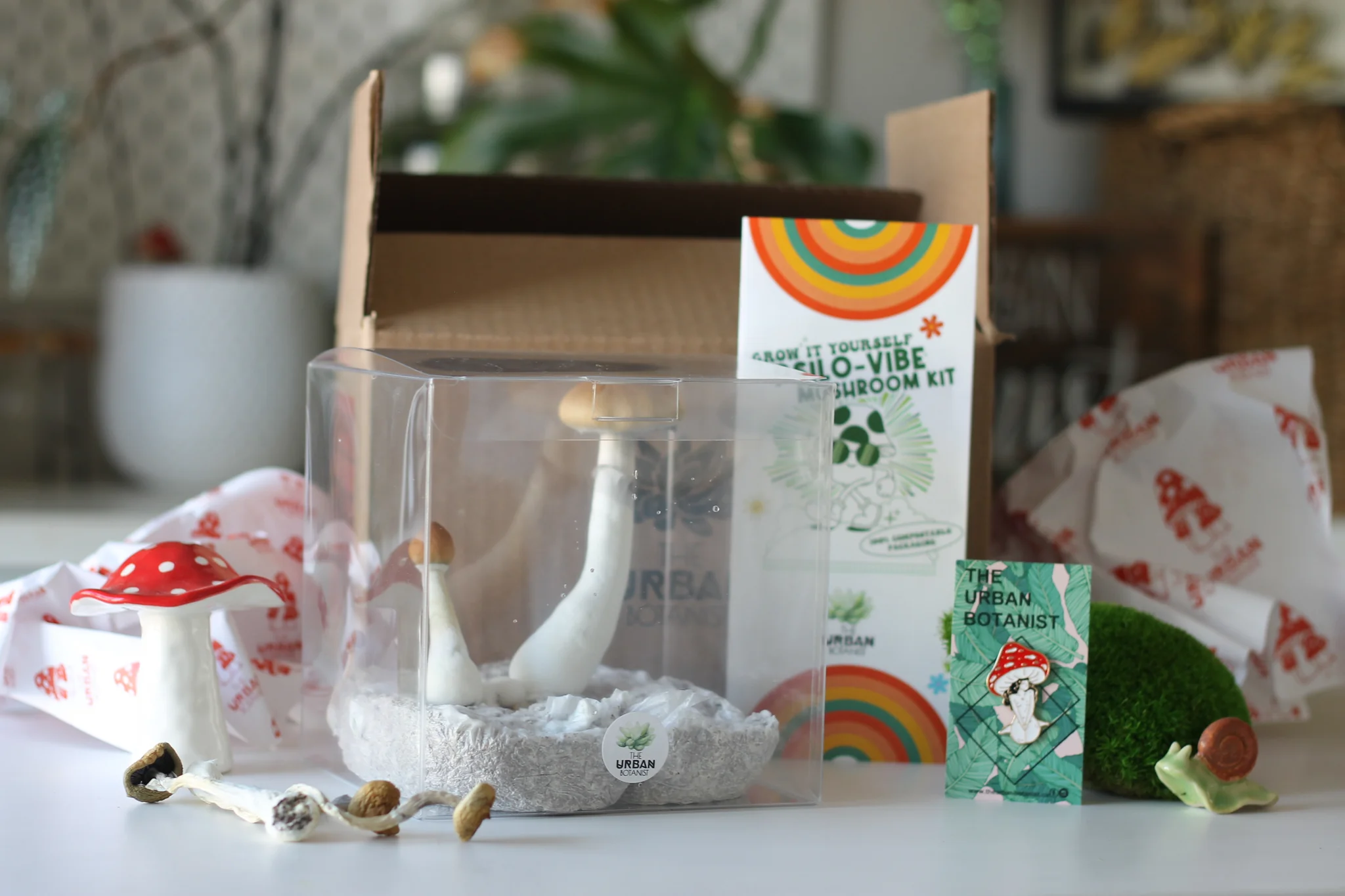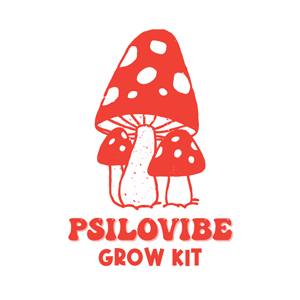The cultivation of magic mushrooms is a nuanced process that unfolds over several weeks, offering a window into the complex interplay of nature and nurture. By embarking on this journey, cultivators engage with a cycle that is as ancient as it is mesmerizing, requiring a blend of patience, care, and a keen observation of nature’s cues. Our guide is crafted to demystify each phase of growth, equipping you with the knowledge to navigate the cultivation landscape with confidence. It’s a journey that not only yields a harvest of mushrooms but also deepens your connection to the natural world.

Preparation and Inoculation Phase
The first steps in mushroom cultivation set the stage for the entire growth cycle. Proper setup and inoculation create the conditions for the mycelium, the mushroom’s root network, to thrive and colonize the substrate. This early phase is about laying a strong foundation, akin to planting a seed in fertile soil, where the initial conditions greatly influence the health and yield of your crop.
Expected Duration:
1-2 weeks.
Key Steps
- Assemble the grow kit by carefully following the detailed instructions to optimize the environment for mushroom growth.
- Sterilize your tools and workspace to prevent unwanted contaminants from jeopardizing the purity and health of your mycelium.
- Gently inoculate the substrate with spores or a mycelium culture, marking the beginning of your cultivation journey.
Mycelium Colonization
During mycelium colonization, the substrate transforms as the mycelium spreads, unseen beneath the surface. This phase is crucial, setting the groundwork for future mushroom development. Watching the mycelium weave its web throughout the substrate is a subtle yet profound experience, indicative of the vibrant life force at work in what seems like stillness.
Expected Duration:
2-4 weeks.
Observations
The substrate’s surface gradually becomes enveloped in white, fluffy mycelium, a sign of healthy colonization.
Keeping an eye out for any signs of contamination is critical during this phase, as the purity of the mycelium ensures a successful transition to fruiting.
Pinning Phase
Pinning is the first visible sign that mushrooms are on their way, a thrilling milestone for any cultivator. It’s the stage where tiny mushroom formations begin to emerge from the mycelium, signaling that the conditions are ripe for fruit body development. Adjusting environmental factors like humidity and fresh air at this stage can significantly influence the quantity and quality of your mushroom crop.
Expected Duration:
5-7 days post-colonization.
Indicators
- The emergence of small, pin-like formations from the mycelium marks the beginning of mushroom development.
- This phase may require adjustments in humidity and ventilation to encourage strong and healthy pin growth.
Fruiting Phase
The fruiting phase is a period of rapid growth, where pins develop into mature mushrooms ready for harvest. It’s a visually rewarding time, as you witness the culmination of your efforts in the form of emerging mushroom caps. Daily care during this phase is paramount, as environmental conditions need to be meticulously maintained to support the mushrooms’ development.
Expected Duration:
5-12 days from pinning.
Care Tips
- Keep the growing environment humid and the temperature stable to encourage uniform mushroom growth.
- Regular misting and ventilation are necessary to provide the mushrooms with the moisture and fresh air they need to thrive.
Harvest Time
Determining the perfect moment to harvest can greatly impact the potency and overall yield of your mushrooms. Mushrooms are generally ready when their caps fully open, a critical time that requires close observation to ensure you harvest at the peak of maturity. The anticipation builds as you monitor your crop for these signs, ready to reap the rewards of your careful cultivation.
Harvest Signs
- The mushroom caps open, and the veil beneath begins to tear, signaling that the mushrooms are at their peak for harvesting.
- Observing these changes closely allows for timely harvesting, maximizing both the quantity and quality of your yield.
Post-Harvest and Potential for Further Flushes
After the excitement of the first harvest, there’s potential for more. With proper care, the substrate can produce several flushes of mushrooms, offering multiple opportunities for harvest from a single inoculation. This phase focuses on rejuvenating the mycelium and preparing for the cycle to begin anew, a testament to the regenerative power of nature.
Post-Harvest Steps
- Drying the harvested mushrooms properly ensures they’re preserved for future use, retaining their potency and preventing decay.
- Rehydrating the substrate and maintaining optimal conditions can stimulate the mycelium to produce additional flushes, extending the cultivation experience.
Flush Potential:
Successful growers can expect 2-3 flushes, with care and conditions being key to achieving multiple harvests.
Factors Affecting Growth Times
Growth times can vary based on a multitude of factors, from the specific mushroom strain to the micro-environment within the grow area. By understanding and optimizing these conditions, cultivators can influence not only the speed of growth but also the overall success of their cultivation efforts. This knowledge empowers growers to create the ideal conditions for their mushrooms, ensuring a fruitful and efficient cultivation process.
Environmental Factors
- Temperature fluctuations outside the ideal range can slow down or accelerate mycelium growth and mushroom development.
- Humidity levels are crucial for mycelium health and mushroom formation; too little or too much can hinder growth.
- Adequate light, although not as critical as temperature or humidity, helps signal the mushrooms to start the fruiting process.
Troubleshooting Slow or Stalled Growth
Encountering growth issues can be disheartening, but understanding how to address them can turn setbacks into valuable learning opportunities. Whether it’s adjusting environmental conditions or reassessing your cultivation strategy, solutions are often within reach. This proactive approach ensures that minor issues don’t escalate, keeping your cultivation journey on track.
Troubleshooting Tips
Slow or stalled growth often signals a need to reassess and adjust humidity or temperature to more favorable levels.
Increasing ventilation can help if high CO2 levels are suspected to be slowing down mushroom development.
FAQ
How long from start to finish does it take to grow mushrooms?
It typically takes about 4-6 weeks from inoculation to harvest, depending on the strain and environmental conditions.
Can I do anything to make my mushrooms grow faster?
Optimizing environmental conditions is key; however, patience is crucial, as rushing the process can lead to issues.
Why aren't my mushrooms pinning?
Check if the humidity and temperature are within the ideal range, and ensure there’s enough fresh air exchange.
What's the best temperature for mushroom growth?
Most mushrooms prefer temperatures between 18°C to 24°C (64°F to 75°F) for optimal growth.
How can I tell if my mushrooms are ready to harvest?
Harvest when the veil under the mushroom cap begins to tear but before it fully detaches.
What should I do with the substrate after the first harvest?
Rehydrate the substrate to encourage more flushes; detailed instructions vary by kit.
How many flushes can I expect from one grow kit?
Typically, 2-3 flushes, with each subsequent flush potentially being smaller than the previous.
My mushrooms are growing but look deformed. What could be causing this?
Deformities can result from inadequate humidity, poor air exchange, or genetic factors.
Can mushrooms be grown in any season?
Indoor kits allow year-round cultivation, but outdoor growth depends on climate and season.
How do I store my harvested mushrooms for long-term use?
Dry them thoroughly and store in an airtight container in a cool, dark place.


